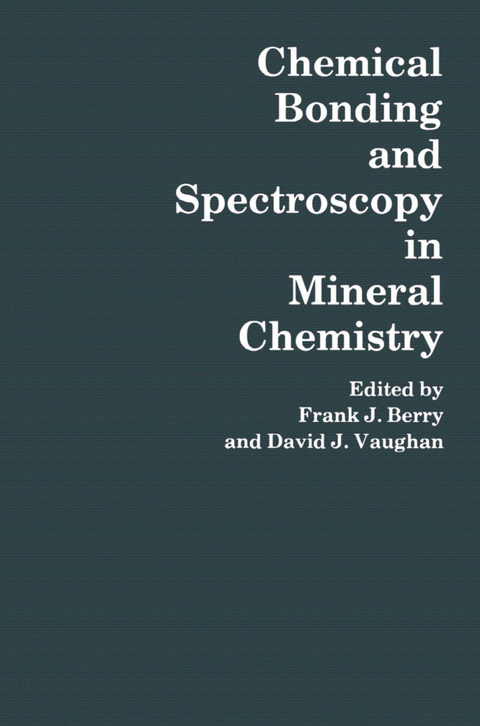
Chemical Bonding and Spectroscopy in Mineral Chemistry
Springer (Verlag)
978-94-010-8645-5 (ISBN)
1 Quantum Mechanical Models and Methods in Mineralogy.- 1.1 Introduction.- 1.2 Full lattice calculations.- 1.3 Cluster calculations on mineral structural properties.- 1.4 Cluster calculations on mineral spectral properties.- 1.5 Cluster calculations of valence electron density distributions.- 1.6 Applications of qualitative MO theory.- 1.7 Conclusions.- Acknowledgements.- References.- 2 X-ray Spectroscopy and Chemical Bonding in Minerals.- 2.1 Introduction.- 2.2 Photoelectron and X-ray spectroscopy.- 2.3 Spectroscopic techniques.- 2.4 Application of XES and XPS to bonding studies in mineral chemistry.- 2.5 Further developments.- 2.6 Conclusions.- References.- 3 Electronic Spectra of Minerals.- 3.1 Introduction.- 3.2 Background.- 3.3 Techniques.- 3.4 Crystal field spectra.- 3.5 Intervalence transitions.- 3.6 Applications.- 3.7 Summary.- References.- 4 Mineralogical Applications of Luminescence Techniques.- 4.1 Introduction.- 4.2 The luminescence process.- 4.3 Experimental techniques.- 4.4 Luminescence centres in some common minerals.- 4.5 Some conclusions.- References 138.- 5 Mössbauer Spectroscopy in Mineral Chemistry.- 5.1 The basis of Mössbauer spectroscopy.- 5.2 The hyperfine interactions.- 5.3 The Mössbauer factor, f, and the intensity of the absorption lines.- 5.457Fe Mössbauer parameters and deductions from such data.- 5.5 Experimental details.- 5.6 Mineralogical applications.- 5.7 Antimony.- 5.8 Other physical studies.- References.- 6 Electron Spin Resonance and Nuclear Magnetic Resonance Applied to Minerals.- 6.1 Electron spin resonance spectroscopy.- 6.2 Practical aspects of ESR.- 6.3 Some applications of ESR in mineral chemistry.- 6.4 Nuclear magnetic resonance spectroscopy.- 6.5 NMR of solids.- 6.6 Applications.- 6.7 High resolution NMR studies ofminerals.- 6.8 Conclusion.- Acknowledgement.- References.- 7 Spectroscopy and Chemical Bonding in the Opaque Minerals.- 7.1 Introduction.- 7.2 Compositions and crystal structures of the major opaque minerals.- 7.3 Approaches to chemical bonding models.- 7.4 Experimental methods for the study of bonding.- 7.5 Chemical bonding in some major opaque mineral groups.- 7.6 Concluding remarks.- References.- 8 Mineral Surfaces and the Chemical Bond.- 8.1 Introduction.- 8.2 Spectroscopic techniques.- 8.3 Applications in mineral chemistry.- 8.4 Concluding remarks.- References.
| Zusatzinfo | X, 326 p. |
|---|---|
| Verlagsort | Dordrecht |
| Sprache | englisch |
| Maße | 155 x 235 mm |
| Themenwelt | Schulbuch / Wörterbuch |
| Naturwissenschaften ► Chemie ► Analytische Chemie | |
| Naturwissenschaften ► Chemie ► Physikalische Chemie | |
| Naturwissenschaften ► Geowissenschaften ► Mineralogie / Paläontologie | |
| Sozialwissenschaften | |
| ISBN-10 | 94-010-8645-1 / 9401086451 |
| ISBN-13 | 978-94-010-8645-5 / 9789401086455 |
| Zustand | Neuware |
| Haben Sie eine Frage zum Produkt? |
aus dem Bereich


